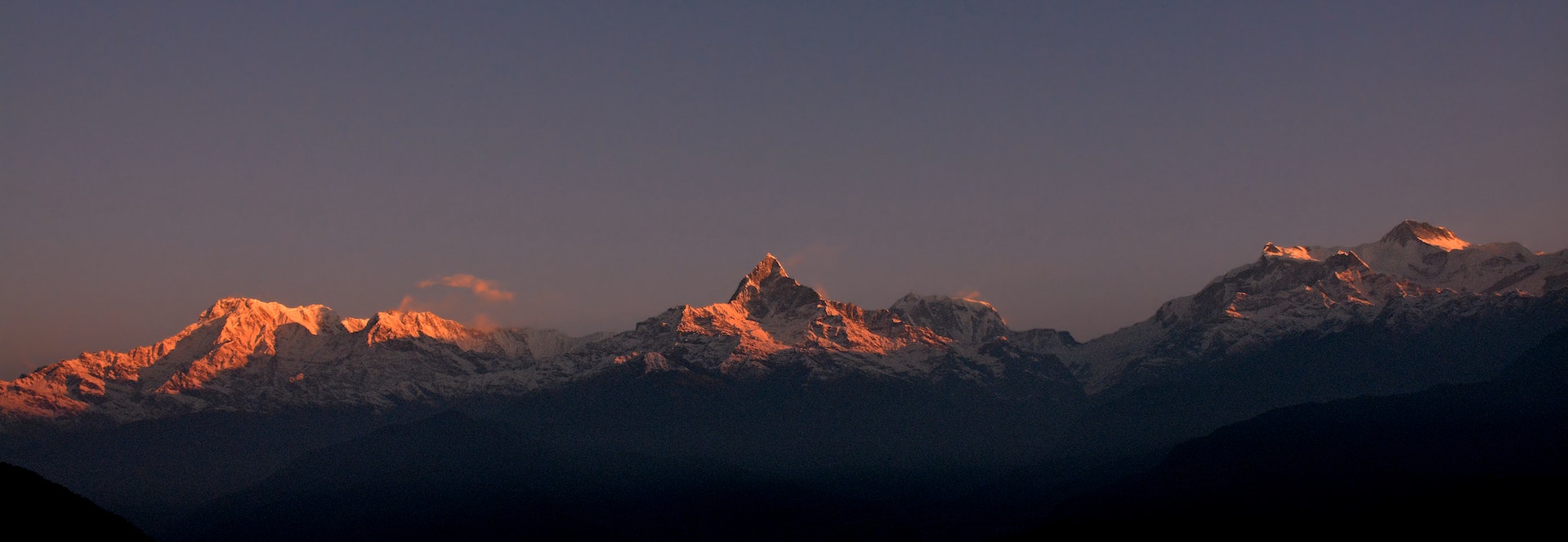Speedy Nepal’s Upper Mustang trek itinerary is intended for beginner trekkers who are in healthiness with average good condition. The ample distance coated between daily itineraries, the steady gain of altitude and separate rest days ensures that we have a tendency to properly acclimatize to totally relish our trek to Upper Mustang. You can customize the itinerary as per your criteria following the precautions.
Day 01: Arrival in Kathmandu (1,300m)
After arriving in Kathmandu, our airport representative will pick you up from the airport and take you to your hotel. In the afternoon, you may take a rest or you can visit our office if you wish to. In the evening, there will be a welcome dinner hosted by our agency. For dinner, you'll be served authentic Nepalese cookery which can introduce you to the country’s food culture. Overnight in Kathmandu.
Day 02: Kathmandu: Sightseeing and Trek Preparation
Today just after your breakfast is over, you’ll begin a guided tour to many of the most historical and religious attractions around Kathmandu valley, which also are listed as United Nations World Heritage sites. You’ll visit the historic Durbar Square, the sacred Hindu temple of Pashupatinath, the famous 'Monkey Temple' (Swayambhunath) and Buddhist shrine (Bouddhanath), which is also one of the largest stupas in the world. At noon, you’ll get your equipment checked by our climbing leader, get introduced to fellow participants, and discuss Upper Mustang trek details at our office. Overnight in Kathmandu.
Day 03: Drive or fly to Pokhara, get some rest and walk around Lakeside.
One the third day, you will leave for Pokhara either by bus or by flight. It takes about 6 hours to reach Pokhara by bus. Likewise, by flight, you will reach Pokhara in 30 minutes. You will take rest and explore the beauty of Lakeside, Pokhara in the evening. Finally, you will spend the night in the Hotel.
Day 04: Fly to Jomsom (2,700m) and trek to Kagbeni (2,810m): approx 4 hours trek
Today You’ll take an early morning flight to Jomsom which is famous for its apples, strong winds and the landscape. You’ll begin your trek on an open trail alongside a beautiful valley. Then you’ll pass through Eaklibatti village before reaching Jomsom which is ideally located at the bank of two rivers. The village is gorgeous with flat-roofed homes and additionally has ruins of an old defence. Overnight in Kagbeni.
Day 05: Kagbeni to Chele (3,050m): Approx. 6 hours
You’ll get permits checked then begin your trek on a trail alongside the Kali Gandaki River. You’ll walk on sand amidst strong winds before ascending on a hill. Then you’ll reach the Tangbe Village and admire its narrow alleyways, white-washed houses, barley and buckwheat fields, and apple orchards. Further, you’ll continue your walk and pass another village and cross a river on your way. Next, you’ll walk on a ridge before reaching Chele Village. Overnight in Chele.
Day 06: Chele to Syanbochen (3,475m): 6-7 hours
From today, your trek will be a little hard compared to what you experienced before. Your hike today involves crossing two passes, Taklam La pass (3,624m) and Dajori La pass (3,735). On your way, you’ll enjoy great views of Tilicho, Yakawa Kang and Damodar Danda and pass by Ramchung Cave. Then you’ll descend further and reach Samar Village. From there you’ll hike on a trail above the village and reach a ridge. Next, you’ll descend on a steep trail to a stream and continue your trek to Syanboche. Overnight in Syanboche.
Day 07: Syanbochen to Ghami (3,520m): approx 6 hours
Today, you’ll ascend to the Yamda La pass at 3,850m. On the way, you’ll pass by a few teahouses, chortens and gorgeous villages. Further, you’ll hike through poplar forests and barley fields and reach Nyi Pass at 4,010m. From there, you’ll descend to Ghami which is one of the biggest villages in the Lo region. The village is amazing with fields surrounding the entire village. Overnight in Ghami.
Day 08: Ghami to Tsarang (3,620m): approx. 6 hours
Today, you’ll begin your trek with a descent through a rough and often slippery trail. Then you’ll cross a suspension bridge over the Ghami Khola and begin ascending. The trail is amazing with mani walls along the path. Next, you’ll cross the Tsarang La Pass at 3870m and reach Tsarang village. The village is located atop the Charang Chu canyon with a big fortress and a red gompa towards its east. Overnight in Tsarang.
Day 09: Tsarang to Lo-Manthang (3,730m): Approx. 4 hours
Today, you’ll begin your trek by descending to a canyon and cross a stream just before beginning your uphill trek to Lo La pass at an altitude of 3950m. From the top of the pass, you’ll get to admire the gorgeous Lo Manthang village. Further, From the pass, you’ll descend to Lo Manthang which is a beautiful walled village. From there the views of the Himalayas including Nilgiri, Tilicho and Annapurna I, Bhrikuti Peak, as well as Damodar Kunda (pond), is quite mesmerizing. Overnight in Lo-Manthang.
Day 10: Explore Lo Manthang and Acclimatization Day
Lo Manthang is a walled ancient city of the remote Upper Mustang region of Nepal. you’ll spend the day touring three major gompas of the town. They are Jhampa, Thupchen and Chhoeda. All of those gompas have undergone professional restoration over the last twenty years. you can also trek to Tingkhar which is a beautiful village located north-west of Lo-Mangthang. Overnight in Lo Manthang.
Day 11: Lo-Mangthang to Drakmar (3810 m): approx. 7 hours
You’ll trek on a different route when returning from Lo-Manthang. Your trek path passes through Gyakar village which houses a century old Ghar Gompa with gorgeous rock paintings. According to a native legend, anyone who makes a wish at the Gompa will have it fulfilled. you’ll explore the Gompa and continue your hike to Drakmar for an overnight stay.
Day 12: Drakmar to Ghiling (3,806m): approx. 6 hours
You’ll start your trek early today to avoid strong winds and descend for the most part of the hike. Your trail passes through a dry plateau and fields until you reach Ghiling. The hike can be relatively difficult as you are most likely to experience strong winds on your face. Ghiling is mostly dry, however, you’ll still get beautiful sight of Dhaulagiri and Nilgiri mountains. You can tour the village around the evening. Overnight in Ghiling.
Day 13: Ghiling to Chhuksang (3050m): Approx. 6 hours
Today, you’ll begin your trek after breakfast. You’ll hike on the same path as before going up to Lo Manthang. On the way to Chhuksang you can enjoy great views of the Himalayas and small villages you’ll pass en route. Overnight in Chhuksang.
Day 14: Chhuksang to Jomsom (2,700): approx. 7 hours
Today is the last day of your trek and it would be a long one. After trekking for a while, you’ll come to an end of your Upper Mustang trek path and join the trails of the Annapurna circuit. You’ll stop for lunch at Kagbeni. After lunch, You’ll continue our trek to Jomsom for an overnight stay.
Day 15: Fly back to Pokhara
Today, you’ll take an early morning flight back to Pokhara. The flight passes through a gorge between Annapurna and Dhaulagiri mountains making the flight itself an amazing experience. After arriving in Pokhara, you can spend the rest of the day in leisure. Overnight in Pokhara.
Day 16: Back to Kathmandu
On this day, you’ll take an early morning bus and drive back to Kathmandu. Alternately, if you wish to explore some more of Pokhara city then, you can extend your stay at Pokhara. Likewise, you can take a flight back to Kathmandu at noon the same day. Stay overnight in the hotel.
Day 17: Final departure
Our representative will take you to Tribhuvan international airport from your hotel and you’ll be leaving Nepal with all the beautiful memories.

